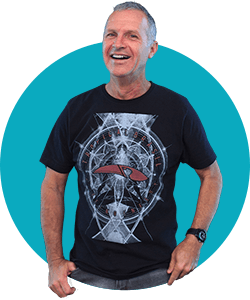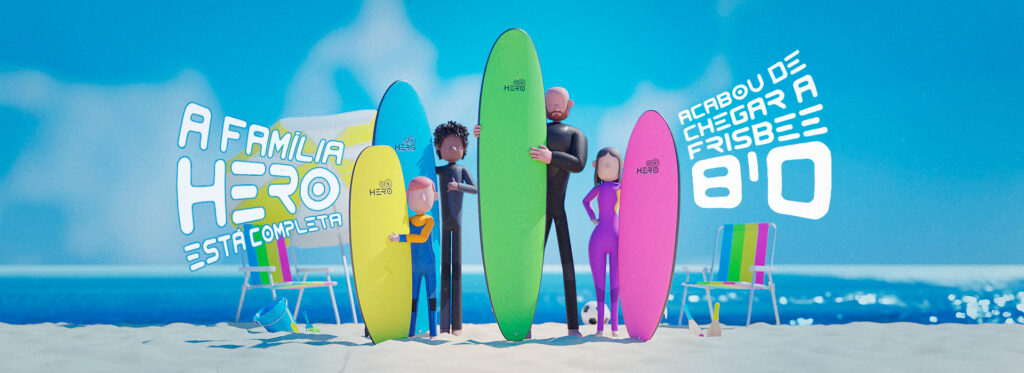Uncategorized
How to choose the best surfboard
The number of factors that influence surfing is so large that many doubts can arise when choosing a surfboard. There is a lot of information available on the Internet, but it is often difficult to trust what is said. In order to make you a bit more secure about everything you will see here, it is worthwhile mentioning the people behind this material:

Avelino Bastos: professional shaper, founder of Tropical Brasil, one of the largest surfboard factories in Brazil, responsible for the boards of many prominent surfers.

Teco Padaratz: Brazilian surfer, two-time World Men’s Qualifying Series world champion and current president of the Brazilian Surfing Confederation .
We hope this content can simplify your life and help you find the ideal board or quiver.
In case you are new to surfing, we will leave below the meaning of some terms that we will use throughout the content, and if you need to consult, just come back here. Check out!
Mini Glossary
- Flat – When the sea has no waves, flat;
- Quiver – A surfer’s set of boards;
- Shaper – The designer who designs the surfboards;
- Crowd – When there are too many people surfing in the same area;
- Feet and inches: Units of measurement for the boards;
- 1 foot = 30.48 cm = 12 inches;
- 1 inch = 2.54 cm, that is, a 6’0” board is 6 feet 0 inches, which is equivalent to 1.82 m.
Board Types
Anyone beginning in surfing needs to be concerned about the buoyancy and stability that the board offers. There are three main types of boards suitable for beginners, with these characteristics in mind:
- Softboard: softboards are the ideal boards for beginners, as these boards have a lot of flotation, generate a lot of stability, and facilitate paddling and catching waves, which are points of extreme importance for your evolution in the sport. Their sizes vary in lengths of 5′, 6′, 7′, and 8′. In addition, it is a softer board, providing more safety during the practice of the activity, cushioning impacts, and facilitating the transport and storage of equipment, in addition to a much longer durability than traditional rigid boards. This board is suitable for all ages.

Hero boards are great softboard options. Take a look at the key differences :
- Lightness: the engineering and technology applied in the development of Hero boards resulted in a board made of a series of differentiated materials that make it comfortable to carry, but at the same time resistant and durable.
- Variety of sizes: today Hero boards has four size options (5’0, 6’0, 7’0, and 8’0), suitable for use to children and adults.
- Enhanced buoyancy: the materials that make up the Hero board have increased floatation in the water, and due to its soft shape it is more flexible to shape the curves of the waves.
- Usability: Hero boards have the best cost-benefit ratio on the market. While great for beginners, you can still use it for a long time after gaining experience.
2. Funboard: funboards are a bit longer and provide less speed and less powerful maneuvers. The advantage of these boards is their stability and the ease with which you can catch waves. The size varies between 7′ and 8′.
3. Longboard (or longboard): these are extremely stable boards with good flotation, as they are longer and wider. They make it easy to catch waves, with sizes starting at 9′.
Within each of these types, there are subdivisions. But, we’ll cover these details in an upcoming content!
How to choose
Volume is more important than size!
The ideal board will be the one that will support your weight and make your life easier at sea.
Always choose a board that will support a weight heavier than your own weight, as this provides greater security and stability when you are paddling out to catch your first waves.
Ah, it’s important that you know that the floatation capacity of the board is measured in liters, so the greater the literage of the board, the greater will be its stability, since the volume is a sort of summary among the size, width and thickness of the board, which will determine its fluctuation.
See below a table that can be used reference for you to know the right literage of your board:

And what about when I get more experienced?
The usability of the boards we mentioned allows you to continue using them after getting more experienced in surfing, and you can keep these boards in your quiver for the days when the sea is flatter.
Or maybe you can even do like professional surfer Jamie O’brien, who was seen surfing insane barrels with Softboards at Pipeline.
Here at Tropical Brasil, we have developed a line of boards especially for those who want to start surfing and gradually advance, spending little, and having an excellent cost-benefit: the HERO Softboard, which we have already explained about above.
Click the button below and learn more!
We also brought Teco Padaratz to talk to you about the Hero Softboard development process and its advantages. Check it out:
